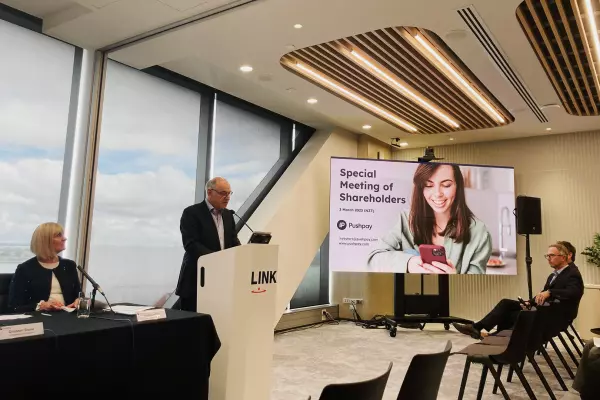Financial service providers have been hitting the phones and social media to reassure clients freaked out by the sudden correction in the share market.
Most key share markets have spent 2022 in constant decline and many have fallen enough to be considered a ‘market correction’.
General manager of CMC Markets NZ, Chris Smith said these corrections were fairly common, but they are happening faster and getting “much more scary”.
The S&P 500 took just 15 days to fall 10% in one of the fastest drops since the pandemic crash in 2020. Meanwhile, the Nasdaq has fallen 10% in the past 10 days and is down almost 15% year-to-date.
While the NZX 50 has fared better, its 7.6% drop has still put a damper on those retail investors who had set a New Year’s resolution to get their investment portfolio sorted.
“And the headline drops in the index at the moment aren't telling the full story, there is decimation in tech sector,” Smith told BusinessDesk.
Many of the popular US stocks bought by New Zealand retail investors – such as Tesla, Nio, Nvidia, and Rocket Lab – have fallen closer to 30%.
Smith said market volatility had been at its highest level since October 2020 ahead of the US Federal Reserve meeting and investors were rushing to buy safer assets.
This volatility has seen financial service providers reaching out to clients in an effort to steady the ship.
‘It’s an opportunity’
Milford Asset Management sent a note to customers on Tuesday evening which said it was managing its exposure and taking advantage of the moves.
“Swings in prices can be concerning, but we see this volatility as an opportunity to outperform asset markets,” wrote chief investment officer Wayne Gentle.
Sharesies offered a similar warning in a text pop up on its app’s homepage and through social media channels.
“We know it can be scary to see your portfolio fluctuate … but before you start to panic it is entirely normal for share prices to go up and down,” it said.
However, it is not retail investors and KiwiSaver customers who are causing the correction according to CMC’s Smith.
“Over 75% of trading volume is institutional driven. Whenever there is a huge correction many market commentators point to algorithmic trading,” he said.
CMC Markets is a licensed derivatives broker that allows clients to do leveraged trading across a range of asset classes.
Smith said trading volume on the CMC platform was up 10-times since September with users attracted by volatility.
Co-chief executive of Sharesies, Sonya Williams told BusinessDesk the number of users selling shares through the platform had gone up, but the total value of selling was normal.
“We always do see a bit of a spike in sales when markets correct. But we did see a spike in deposits onto the platform as well,” she said.
This is likely to be investors who subscribe to the buy-the-dip investment theory, where you put money into the market after a fall and then hold it long term.
Fast fall = big bounce?
Williams said it had been a “shaky start to the year” but users were prepared for a possible correction.
“Opening your phone, looking at your portfolio and seeing those returns down can cause a bit of a shock to the system for people, but we haven’t seen behaviours changing,” she said.
The vast majority of Sharesies’ 500,000 users signed up after the pandemic crash in 2020 and have been taught markets always go back up in the long term.
Historical data shows the market can bounce back quickly from these rapid corrections.
LPL Research said in the six occasions the S&P 500 fell more than 10% in less than a month, it recovered an average of 14% in the next six months.
But bigger corrections can take much longer. The S&P 500 fell for three straight years after the tech bubble popped in 2000 and it took five years to recover from the global financial crisis in 2007 – which is not included in the data because the correction started slowly.
The difference between now and then is that central banks have thrown everything they have into staving off economic collapse and have only just started to unwind that support.
NZ’s central bank began tightening monetary policy last year and is expected to raise the official cash rate to at least 2%.
Its US counterpart, the Federal Reserve, is beginning to follow suit as it attempts to prevent high levels of inflation becoming entrenched. This is what set markets falling this week.
Today the central bank announced the results of its January meeting, with the outcome as expected: it will end money printing and make its first interest rate hike in March.
US shares had been trading higher throughout the session prior to the Federal Reserve’s statement but it fell during chair Jerome Powell’s press conference.
“The more Powell talked during the question-and-answer session the more hawkish he sounded,” said Oanda analyst Edward Moya.
Powell wouldn’t rule out hiking at every meeting, nor would he rule out a 50 basis point hike.
The S&P 500 index finished the session down 0.4% with its year-to-date decline sitting at 9.6%.















